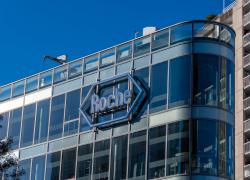
Merus’s big bispecific test approaches
Hopes are high for petosemtamab head and neck data at ASCO, but what does a win look like?
Hopes are high for petosemtamab head and neck data at ASCO, but what does a win look like?

Next month’s data reveal from Merus has the potential to put the company’s lead project, petosemtamab, on the path to becoming a front-line treatment for head and neck cancer. This makes the disclosure a huge event for the company, as investors and potential partners seek to determine the bispecific’s potential.
True, the results to be presented at ASCO are only from a phase 2 trial, so any positive findings will need replicating in pivotal studies. But hopes are high that petosemtamab, which was tested in combination with Keytruda, will add to the efficacy of that checkpoint inhibitor. A 50% response rate appears to be the bar to beat.
Petosemtamab is a bispecific MAb that hits EGFR x LGR5. The former target is of course well validated in head and neck cancer by Lilly’s Erbitux, an EGFR-directed MAb and a standard of care in the disease. Unlike Erbitux, however, petosemtamab binds through LGR5, leading to EGFR internalisation and degradation. This mechanism should give the bispecific better potency, Merus claims.
Early data in advanced, pretreated head and neck cancer patients lend some support to the theory. AACR last year saw a 37% response rate presented in second-line patients. Cross-trial comparison caveats notwithstanding, this is competitive versus the 13% on Erbitux’s label in late-line patients; it's worth noting, however, that more recent trials conducted in post-PD-L1 patients have reported response rates of around 20% for the Lilly MAb.
First-line hopes
When it comes to front-line treatment, Keytruda monotherapy is approved in PD-L1≥1% expressing tumours, supported by Keynote-048. That trial generated a 19% response rate.
Merus’s ASCO data concern an arm of an ongoing phase 2 trial that recruited previously untreated patients eligible to receive Keytruda monotherapy. These were dosed with the checkpoint inhibitor and petosemtamab.
The thinking goes that Keytruda’s 19% ORR plus petosemtamab’s second-line 37% ORR makes a response rate of at least 50% achievable by the combination. Should that figure top 60%, sellside analysts are likely to start talking about “bull cases”, and blockbuster sales.
The small patient number – data in up to 40 subjects are expected – and lack of a control arm should temper enthusiasm, if the results impress.
Competition
Anything under 50% ORR will be viewed as disappointing, however, particularly considering some recent competitor data. One example is Bicara, whose EGFR x TGFβ bispecific has generated a 46% ORR, also in combination with Keytruda.
Safety will be another closely watched data point at ASCO, with around 75% of patients reporting infusion reactions in previous petosemtamab trials.
Merus is already talked about as a takeout target, and strong ASCO data will only burnish that reputation. But with others vying for a slice of this market, disappointment will be punished.
Setting the bar for petosemtamab: cross-trial comparison of response rates in 1L H&N
| Merck & Co | Bicara | Rakutan | |
|---|---|---|---|
| Setting | Keytruda monotherapy (n=257, PD-L1≥1% patients) | BCA 101 + Keytruda (n=50, PD-L1≥1% patients) | Cetuximab saratolacan + Keytruda (n=5, PD-L1≥1% patients) |
| ORR | 19% | 46% | 29% |
Source: OncologyPipeline.
1445













